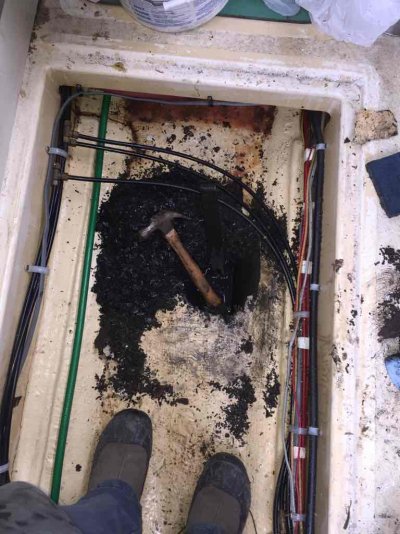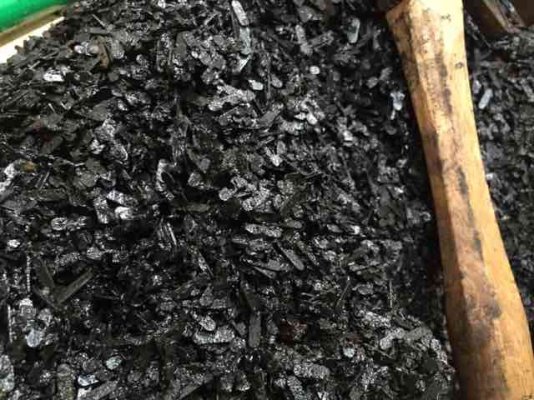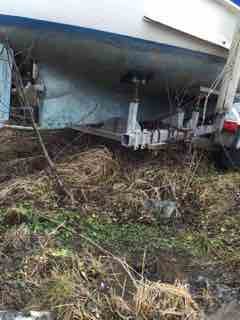Vashonshelter
Member
I pulled a floor panel and noticed a crack in fiberglass deck in the cabin. Poked my knife in crack and it was soft so started digging out flaky material that looked a lot like shaley Rock - not red like rust usually is. I got a hammer and bar and started digging it up but it's looking pretty major at this point and I'm wondering whether this material is in fact rusted or rotten metal.
The Vashon is a fiberglass boat with a fairly deep keel and I would suppose that it is some kind of metal for ballast. Can anyone advise me about what this flaky metal is and whether I need to start tearing it all out? It's kinda scary looking. I appreciate any links or references to hull construction on the Vashon pocket trawler.
The Vashon is a fiberglass boat with a fairly deep keel and I would suppose that it is some kind of metal for ballast. Can anyone advise me about what this flaky metal is and whether I need to start tearing it all out? It's kinda scary looking. I appreciate any links or references to hull construction on the Vashon pocket trawler.



